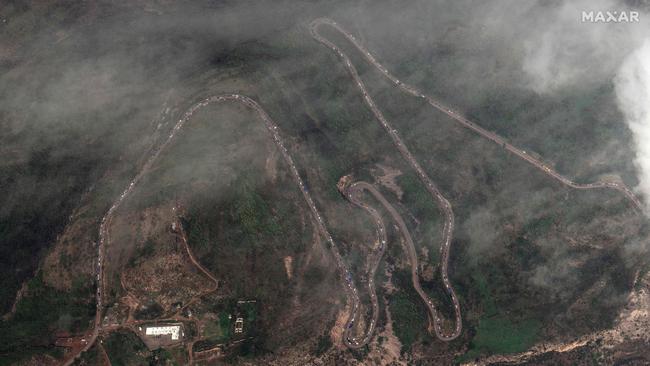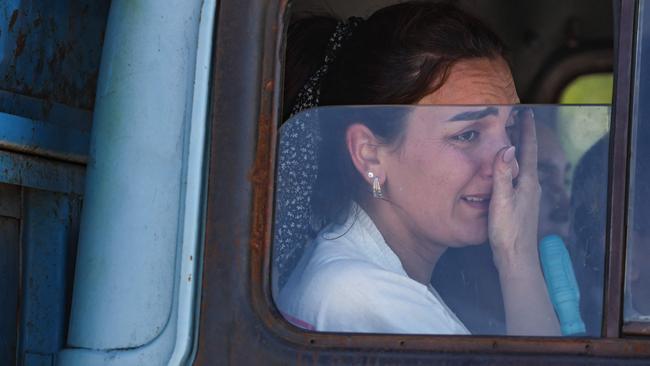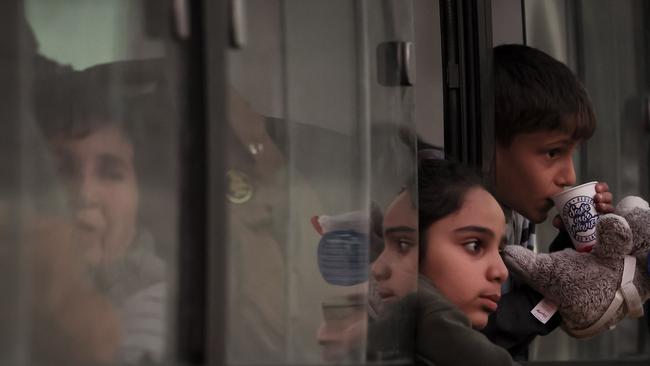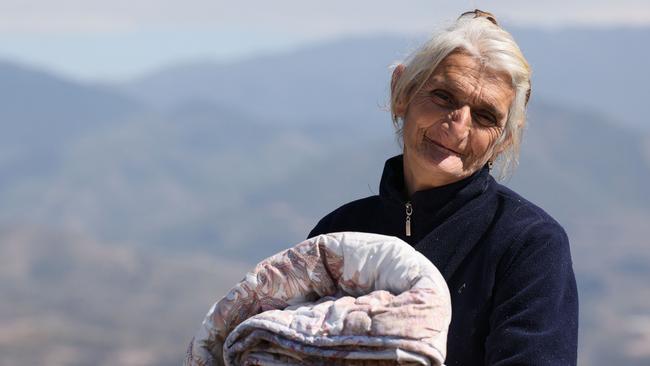Nagorno-Karabakh will ‘cease to exist’ after population flees
The Armenian government says more than 53,000 have left since the nine-month blockade on the enclave was lifted on Sunday.

The self-proclaimed republic of Nagorno-Karabakh announced on Thursday it would cease to exist, after a military defeat by Azerbaijan followed by an exodus of over half of the enclave’s population.
The separatist leader of the territory issued a decree ordering the dissolution of all state institutions by the end of the year and said Nagorno-Karabakh “ceases to exist” as of January 1, 2024.
The dissolution will bring to an end three decades of Armenia-backed self-rule for Nagorno-Karabakh, a majority ethnic Armenian enclave inside the internationally recognised borders of Azerbaijan.
Separatist leader Samvel Shakhramanyan said that an agreement struck with Azerbaijan would ensure the “free, voluntary and unhindered passage” for all those who wanted to leave.
Armenia said on Wednesday nearly half of Nagorno-Karabakh’s population has fled the enclave since Azerbaijan last week crushed the rebels’ decades-long fight for an independent state.
Yerevan’s attempts to absorb the sea of homeless and hungry ethnic Armenians come with officials still trying to identify the whereabouts of more than 100 people reported missing in a fuel depot blast on Monday that claimed 68 lives.
The fireball erupted as refugees from Nagorno-Karabakh were stocking up on fuel for the long drive along the lone mountain road leading to Armenia.
The Armenian government said overnight on Wednesday more than 53,000 people had left since Azerbaijan lifted its nine-month blockade on the enclave on Sunday. Some of the families at the border said they were urged to leave by the separatists.
The updated refugee number accounts for nearly half of the region’s 120,000 population and marks a fundamental shift in ethnic control of lands disputed by mostly Christian Armenians and predominantly Muslim Azerbaijanis for the past century.

It adds to the economic strains of Armenia – a landlocked Caucasus country with few natural resources and emerging problems with longstanding ally Russia.
Pensioner Alekhan Hambardzyumyan was one of hundreds of people trying to survive on the streets of Armenia’s mountaintop village of Goris after fleeing Nagorno-Karabakh this week.
Goris has become the main destination point for the families fleeing their hometowns in beat-up Soviet-era Ladas and farm vehicles.
The 72-year-old was spending nights in a shelled-out van and grieving the loss of his son in last week’s fighting. “I want to go to Yerevan,” Mr Hambardzyumyan said. “But I don’t know what the state can offer me.”
The Armenian government said it had prepared living arrangements for 40,000 families after last week’s fighting broke out, but Prime Minister Nikol Pashinyan’s spokeswoman said late on Tuesday that the government had so far been able to find housing for 2850 people. “There are thousands staying in Goris at the moment,” deputy mayor Irina Yolian said. “It’s impossible to give the exact figure. They come and go every day.”

The looming humanitarian crisis poses a political problem for Mr Pashinyan. The opposition agreed to end six days of anti-government protests on Tuesday to allow officials to focus on helping the displaced. The demonstrations were spearheaded by pro-Russians and Nagorno-Karabakh supporters who have roots in the region. Their anger could rise after Azerbaijan’s detention of Ruben Vardanyan – a Nagorno-Karabakh businessman who headed the separatist government from November 2022 until February – while he was trying to enter Armenia on Wednesday.
“The influx of refugees will have a serious impact on the domestic political situation in Armenia,” said political analyst Boris Navasardyan.
The Red Cross and the UN refugee agency are trying to organise immediate help but Russia is working hand in hand with Azerbaijani forces and focused on disarming the separatists under the terms of a ceasefire reached last Wednesday. Baku’s forces have approached the outskirts of rebel stronghold Stepanakert – but not yet entered the emptying city – after last week’s fighting claimed about 200 lives on each side.

Yerevan’s attempts to absorb the sea of homeless and hungry ethnic Armenians come with officials still trying to identify the whereabouts of more than 100 people reported missing in a fuel depot blast on Monday that claimed 68 lives.
The fireball erupted as refugees from Nagorno-Karabakh were stocking up on fuel for the long drive along the lone mountain road leading to Armenia.
The Armenian government said overnight on Wednesday more than 53,000 people had left since Azerbaijan lifted its nine-month blockade on the enclave on Sunday. Some of the families at the border said they were urged to leave by the separatists.
The updated refugee number accounts for nearly half of the region’s 120,000 population and marks a fundamental shift in ethnic control of lands disputed by mostly Christian Armenians and predominantly Muslim Azerbaijanis for the past century.
AFP



To join the conversation, please log in. Don't have an account? Register
Join the conversation, you are commenting as Logout